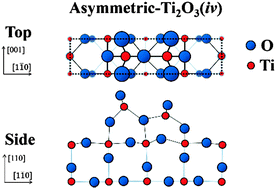Structure determination of the rutile-TiO2(110)-(1 × 2) surface using total-reflection high-energy positron diffraction (TRHEPD)
Abstract
The exact structure of the rutile-TiO2(110)-(1 × 2) surface, which had been under debate over the past 30 years, was investigated using the newly developed technique of total-reflection high-energy positron diffraction (TRHEPD), which is a positron counterpart of reflection high-energy electron diffraction (RHEED). The rocking-curves for the 00-spot obtained from the experimental diffraction patterns were compared to the curves for various models calculated with a full-dynamical theory. It was found that the rocking-curves matched those for a surface consisting of a Ti2O3 configuration, originally suggested by Onishi and Iwasawa [H. Onishi and Y. Iwasawa, Surf. Sci., 1994, 313, L783], but with a further modification of atomic positions close to the ones proposed by Wang et al. [Q. Wang, A. R. Oganov, Q. Zhu and X. F. Zhou, Phys. Rev. Lett., 2014, 113, 266101]. This result demonstrates that TRHEPD can distinguish between the existence and absence of the oxygen atoms on the topmost surface, and between the Ti atoms residing in positions at the interstitial-vertical sites and those at interstitial-horizontal sites.


 Please wait while we load your content...
Please wait while we load your content...